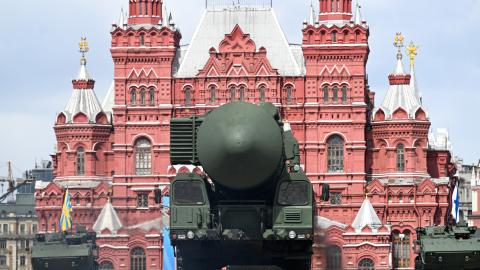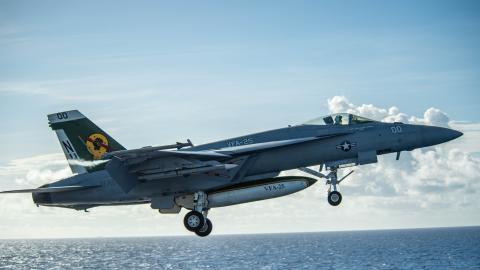The U.S. Air Force’s recent announcement that it used digital design to rapidly develop a new fighter demonstrator is a refreshing improvement in defense R&D. Too often programs get bogged down in a quagmire of overly-ambitious requirements, unachievable schedules, and scarce funding. When combined with low risk tolerances, the result is often systems that arrive decades late and are unaffordable to sustain. Computer-based design, digital “twins” that replicate expensive hardware using software, modular components, and new ways to measure risk could offer a way out of the cul-de-sac in which new defense programs often find themselves.
But accelerated product development is not the most important insight DoD and its suppliers should take away from big tech and Silicon Valley. Simply becoming faster and more efficient at demonstrating new versions of today’s systems won’t significantly improve the unaffordable cost structure of the U.S. military or enable U.S. forces to gain a durable advantage against capable competitors like China or Russia. More fundamental changes are needed.
Perhaps the worst kept secret in Silicon Valley is its strategy of “fake it ‘till you make it,” in which energetic tech salesmen use demos and truth-stretching marketing to build excitement while engineers rush to make a product work in the real world. Recent announcements like the fighter demonstrator feel like an example of this strategy. Ambitious marketing, however, isn't the lesson DoD should take from Silicon Valley; instead the U.S. military should learn the art of disruption.
Although defense officials and military analysts often talk about disruption, they usually just mean evolutionary changes to a process. Truly disrupting a mission involves replacing its metrics for success and restructuring how its elements are provided and combined. Only by revising the basis and rules for a competition can the U.S. military affordably gain an upper hand against its opponents.
Disrupt, or be disrupted
Harvard Business School professor and author Clayton Christensen spent a career studying how business models are disrupted and why. His research offers a roadmap DoD should follow to adopt new technologies and operational concepts. Instead of innovating via flashy rollouts or highly orchestrated demonstrations, the department should assess how the conduct of its missions should change to exploit new technologies.
Christensen raises several examples in his work, but a familiar one is that of the IBM personal computer during the late 1980s. A high-performing machine for its time, the IBM PC was tightly integrated, with components built or carefully sourced by IBM and combined in a way to optimize the computer’s processing power and utility for corporate users. The emerging generation of PC enthusiasts and small businesses, however, didn't need the performance afforded by IBM’s integrated design. At the same time, component suppliers improved their technologies and interfaces to the point where multiple configurations could support the needs of personal computing’s new customer base.
We are familiar with the result. New PC companies including Compaq, Dell, and Gateway emerged that assembled parts from third-party suppliers and offered performance almost as good as IBM but at a much lower cost. The new companies’ business models and success were based on changing consumer demands and the ability of technology to deliver on those requirements.
Many of the US military’s most important missions are ripe for the kind of disruption Christensen describes, as they are performed by highly-integrated manned platforms and weapons organized into relatively inflexible systems of systems.
For example, like the 1980s IBM PC running database programs, US nuclear attack submarines and their heavyweight torpedoes are superb for missions like destroying other submarines. But they could be replaced in the anti-submarine warfare mission by groups of unmanned platforms and smaller weapons that are less lethal—if the metric for success is instead suppressing submarines. And like the Dell or Compaq PC, an unmanned system of systems would be less expensive to buy and operate.
Similarly, the Air Force’s Skyborg project offers the potential of disrupting traditional concepts for long-range air strikes by using manned bombers to manage attack operations and employing smaller, less-expensive unmanned aircraft to deliver weapons and electronic warfare payloads inside highly contested areas. This new approach is made possible in part by new metrics for strike that focus on neutralizing “softer” targets like air defenses and radars rather than destroying fortified troop formations or hardened bunkers.
Embracing resource constraints
The Pentagon will need disruption to address the budget constraints it is likely to face during the coming decade. Regardless of who wins the November election, growing federal deficits and increased spending on pandemic-related relief will constrain defense funds. Commercial enterprises are intended to deliver customer requirements at the best margin, which incentivizes new business models that deliver acceptable performance at lower cost. DoD can harness the same forces to conduct missions more sustainably.
Improving the speed of developing new capabilities is obviously a welcome development from DoD. But to address the challenges that lie ahead, the Pentagon will need fundamental change. Faster fielding of another manned fighter will perpetuate existing operational concepts and metrics for air warfare that are too expensive for the future environment and unable to scale to the likely need. DoD instead should explore ways to disrupt every mission.
Read in Forbes















